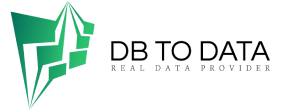Introduction
In today’s digital age, email has become Understanding the Importance the primary mode of communication for both personal and professional interactions. Mastering the art of introducing yourself via email is crucial for building relationships, networking, and making a positive first impression. Whether you’re reaching out to a potential employer, a new client, or a prospective collaborator, a well-crafted introduction email can open doors to new opportunities.
A well-written introduction email serves several purposes:
- First Impressions: It creates a business contacts at mission internal medical group incorporated lasting impression of your professionalism, personality, and communication skills.
- Building Relationships: It establishes a foundation for future interactions and collaborations.
- Generating Interest: It piques the recipient’s interest and encourages them to respond.
- Achieving Goals: It clearly communicates your purpose for reaching out and sets the stage for your desired outcome.
Key Elements of an Effective Introduction Email
1. Subject Line:
- Be clear and concise.
- Clearly state your purpose.
- Avoid generic or overly promotional subject lines.
2. Greeting:
- Use a formal or A Comprehensive Guide informal greeting depending on your relationship with the recipient.
- Address the recipient by name if possible.
3. Introduction:
- Briefly state your name and your affiliation (if applicable).
- Explain how you came to know the recipient (mutual connection, referral, research).
- Clearly state the purpose of your email.
4. Body:
- Provide relevant background information about yourself or your company.
- Highlight your skills, experience, or qualifications that are relevant to the recipient.
- Express your interest in connecting and explain why.
- Keep the email concise and focused.
5. Call to Action:
- Clearly state what you want the recipient to do next.
- Suggest a specific next step, such as a meeting, phone call, or follow-up email.
6. Closing:
- Thank the recipient for their time and consideration.
- Include a professional closing, such as “Sincerely” or “Best regards.”
- Provide your contact information.
Tips for Writing a Standout Introduction Email
- Personalization: Tailor your email to the specific recipient and their interests.
- Research: Learn about the recipient and their company beforehand.
- Proofread: Ensure your email is free of errors.
- Keep it concise: Avoid lengthy and rambling emails.
- Follow up: If you don’t receive a response, consider sending a polite follow-up email.
Sample Introduction Email Templates
Networking Email:
Dear [Recipient’s Name],
I hope this email finds you well.
My name is [Your Name], and I’m a [Your Job Title] at [Your Company]. I recently came across your profile on [Platform] and was impressed by your work on [Project/Article].
[Company Name] is currently focused on [Your Company’s Focus]. I believe there could be potential synergies between our companies, and I would love to learn more about your work at [Recipient’s Company].
Would you be available for a brief chat next week? I’m happy to schedule a time that works best for you.
Thank you for your time and consideration.
Sincerely, [Your Name] [Your Contact Information]
Job Application Email:
Dear [Hiring Manager’s Name],
I am writing to express my keen interest in the [Job Title] position at [Company Name], as advertised on [Job Board].
With [Number] years of experience in [Industry], I have developed a strong skill set in [Skills].
Thank you for your time and consideration.
Sincerely, [Your Name] [Your Contact Information]
Common Mistakes to Avoid
- Generic Templates: Avoid using generic templates that don’t reflect your personality or the recipient’s interests.
- Typos and Errors: Proofread carefully to avoid mistakes that can damage your credibility.
- Overly Promotional: Focus on building a relationship rather than solely promoting your products or services.
- Lack of Clarity: Ensure your email clearly communicates your purpose and desired outcome.
Conclusion
Crafting an effective introduction email is a valuable skill that can open doors to new opportunities. By following these guidelines and tailoring your email to the specific recipient, you can increase your chances of making a positive first impression and building lasting relationships. Remember, practice makes perfect, so don’t be afraid to experiment with different approaches.
Subheading: Keywords
introduce yourself via email, introduction email, email etiquette, email template, networking email, job application email, email writing tips, email best practices, email subject line, email body, email closing, email personalization, email follow-up.
Would you like to focus on a specific type of introduction email, such as cold emailing or introducing yourself to a new team?


